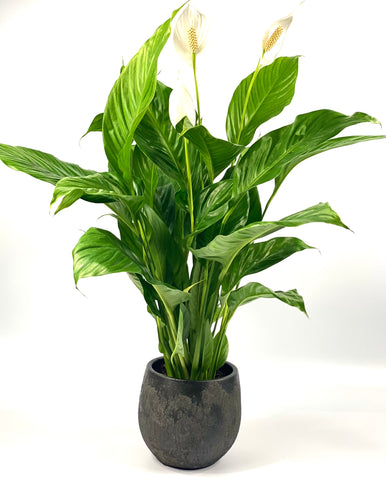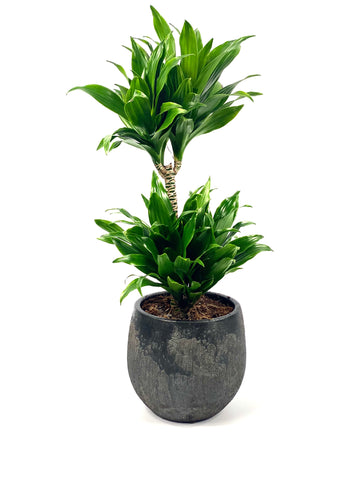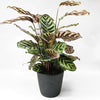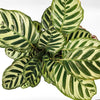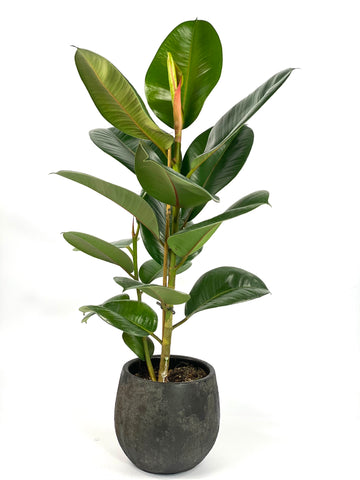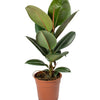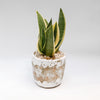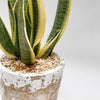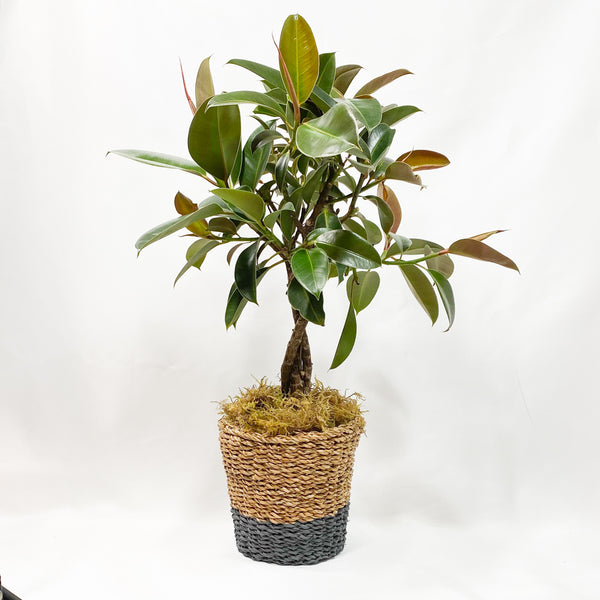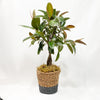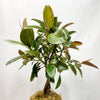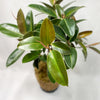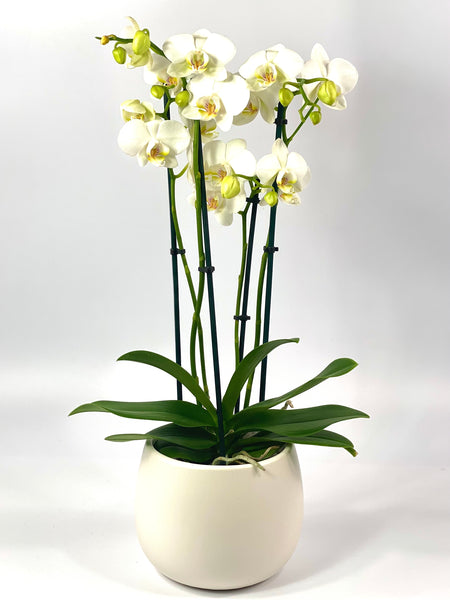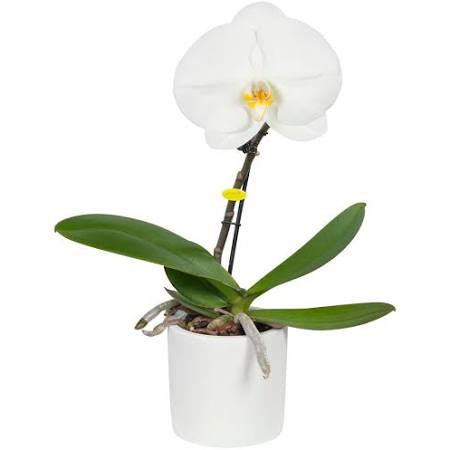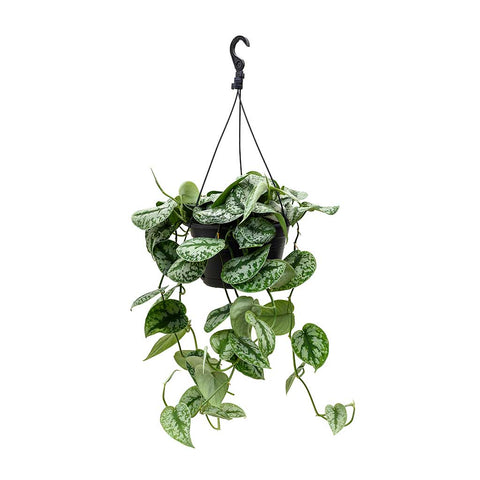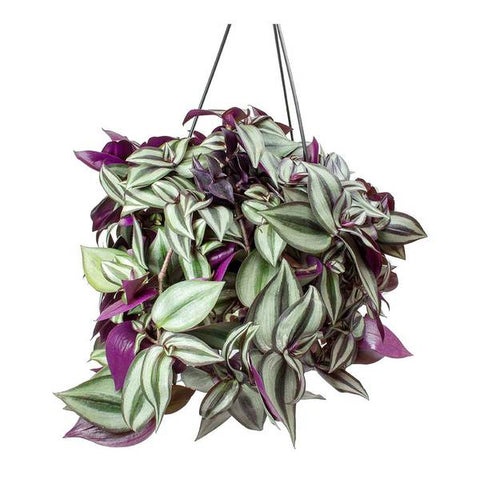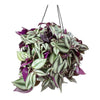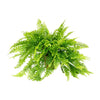House Plants
-

Peace Lily
£42.00
Visit product page →Spathiphyllum Vivaldi is a mid-sized Peace Lily with lots of beautiful glossy, dark green leaves and large white spathes that can last for weeks. The pot may vary.
Light: Moderate to bright, indirect light preferred. Will adapt to lower light levels.
Water: Keep the soil moist at all times. Allow the top of the soil to dry out slightly before watering. The plant will start to droop if it needs more water. Ensure adequate drainage.
Temperature: Average room temperatures from 18-24°C but can cope with as low as 12°C in winter.
Humidity: Enjoys increased levels of humidity if possible. Mist regularly.
Feed: Apply a weak dose of a liquid fertiliser once or twice a month during the growing season.
Care tips: Flowers are relatively short lived. They will turn brown and die off naturally. Remove from the base of the stems as necessary.
Air Purifying: This plant filters airborne toxins and is part of our clean air plant collection.
Height and Growth Rate: Ultimate height c75cm. Moderate growth rate.
Toxicity: Mildly toxic if eaten.
Origin: South America
-
 Sold out
Sold outDracaena Compacta
Sold out
Visit product page →Compacta as the name suggests is a compact version of Dracaena fragrans. It has a thick green stem and superb, dense clumps of short, dark green leaves. This is one variety of Dracaena whose leaves are not variegated; instead you get a wonderful rich and deep glossy green leaf.
Compacta is very definitely a stylish option and looks stunning in modern, contemporary settings. Dracaena Compacta likes bright conditions and enjoys slightly raised humidity. Like all Dracaena it helps purify the surrounding air.
Light: Dracaena Compacta likes bright, indirect light. It will tolerate some light shade.Water: Water when the soil starts to dry out at the top, water well and allow to drain thoroughly. Dracaena are relatively drought tolerant. Do not over water as this will cause the leaf tips to blacken.
Temperature: Average household temperatures between 16-24°C but can cope with as low as 12°C for short periods.
Humidity: Increase humidity levels via a pebble tray and mist regularly, especially if the heating is on.
Feed: Apply a weak dose of a fertiliser once or twice a month during the growing season.
Care tips: Wipe leaves with a damp cloth to remove accumulated dust. Cut back by removing the top of the plant if it grows too tall. Don't use leaf shine on these plants.
Air Purifying: This plant filters airborne toxins and is part of our clean air plant collection.
Height and Growth Rate: Ultimate height 1-2m. Very slow growing.
Toxicity: The sap is toxic to animals. It is not considered poisonous to humans but should not be ingested.
Origin: Tropical Africa.
-
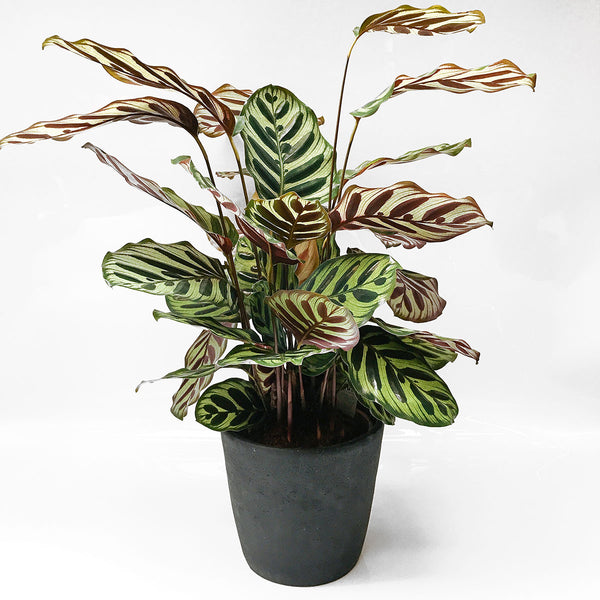
Calathea
£40.00
Visit product page →The calathea was given its common name, prayer plant, because its leaves fold together at night, like praying hands. If you’re up early enough you’ll see those leaves relax at sunrise, to collect all the day’s rays.
Native to Brazilian rainforests, the prayer plant grows in a variety of different colours in the wild.
To keep your plant happy, give it a spot somewhere that gets a medium level of light and water it whenever the top two inches of soil feel dry. You should also give it a feed with liquid fertiliser once a month in spring and summer.
This plant is amazingly easy to keep.
-
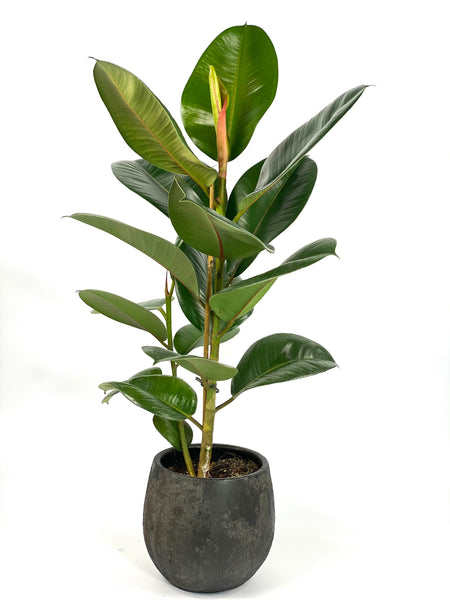
Ficus Robusta
£21.50
Visit product page →Ficus elastica Robusta is a modern variety that is very close to the original species in appearance, but with leaves that are wider and more glossy.
Being one of the best air-filtering plants available, and low-maintenance too, Robusta is a great plant to add lush, tropical foliage to your interior spaces.
Light: Ficus elastica Robusta prefers bright, indirect light but does cope quite well in lower light conditions.
Water: Water when the soil starts to become slightly dry at the top. Keep the soil lightly moist at all times, but do not over water as this will cause leaf drop.
Temperature: Ideal temperatures are 16-24°C. Avoid cold draughts.
Humidity: No specific requirements, although the occasional misting wouldn't go amiss.
Feed: Apply a weak dose of a fertiliser once or twice a month during the growing season.
Care tips: Insufficient light or incorrect watering can trigger leaf drop. Adjust as necessary and your plant should quickly recover. Wipe the leaves occasionally with a damp cloth to prevent dust accumulation. Note: Ficus sap contains sticky latex which can be an irritant, therefore wash your hands if any comes into contact with your skin.
Air Purifying: This plant filters airborne toxins and is part of our clean air plant collection.
Height and Growth Rate: In their native environment, Ficus elastica Robusta can grow to many metres tall. As an indoor house plant, it is up to you: simply trim to maintain your desired height. Typical indoor heights are anything from 30cm to 2m. Moderate to fast growing.
Toxicity: Considered poisonous, therefore keep away from children and animals.
Origin: India and Indonesia.
-
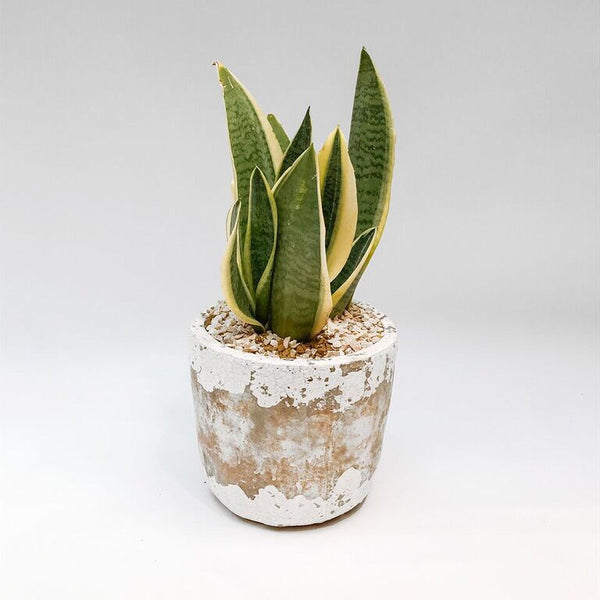
Sansevieria
£35.00
Visit product page →In an taupe pot
mother-in-law's tongue
Sanseviera are stemless, erect, rhizomatous, succulent perennials with evergreen, ovate or strap-shaped, leathery leaves often attractively marbled, and short spikes of small fragrant tubular greenish-white flower
S. trifasciata is a succulent perennial forming a clump of erect, sword-shaped deep green leaves with pale green transverse bands, with racemes of small, tubular pale green flowers in summer or autumn -
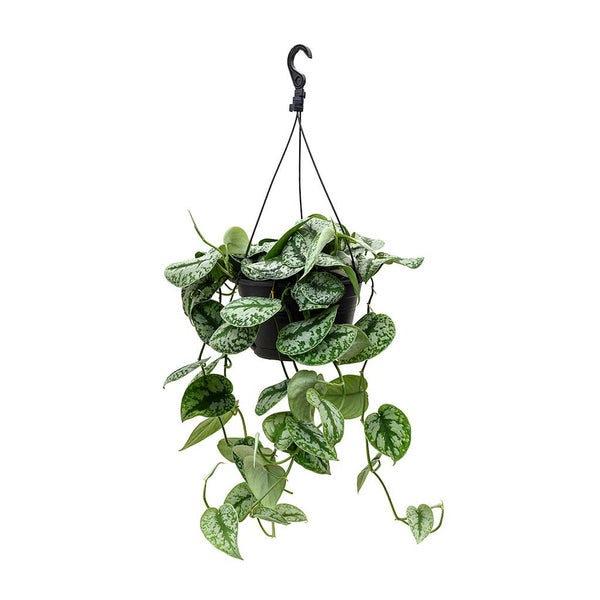
Epipremnum Trebie
£30.00
Visit product page →Scindapsus pictus Argyraeus (particularly in Europe). Pictus means 'painted' and is a reference to its lovely silvery variegation.
Trebie has large, heart shaped satin green leaves with large silvery-white splotches. It is compact and slow growing. Satin Pothos Trebie is lovely as a hangingLight: Moderate light levels.
Water: Water when slightly dry. Drought tolerant. Too much water will kill the plant.
Temperature: Happy in room temperatures from 15-24°C.
Humidity: Prefers increased levels of humidity but will tolerate normal conditions.
Toxicity: Mildly toxic to humans, harmful to pets. Keep away from children and animals.
-
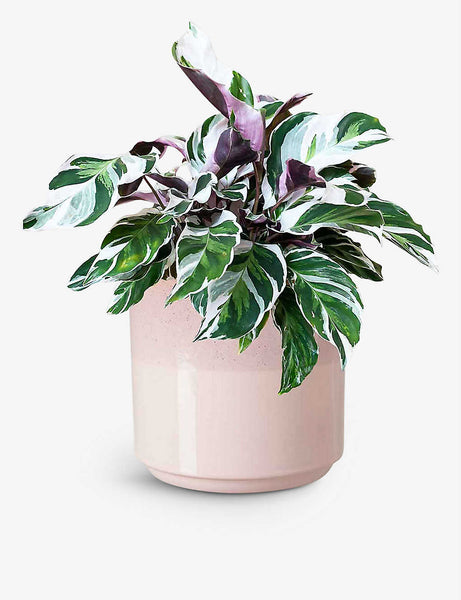
Z- Calathea White Fusion
£60.00
Visit product page →As with most variegated plants, Calathea need plenty of diffused light however direct sunlight will cause the leaves to fade and lose their markings. They can tolerate some degree of shade, but the better the light conditions, the more you will be rewarded by fine foliage. Experiment in your home to find the perfect spot for your plant.
Water: Calathea must be kept in damp soil at all times, but definitely do not allow the plant to sit in water or in very wet soil. Think little and often as a watering policy.
Temperature: Prefers warm to high temperatures, ideally between 18-23°C but can cope with as low as 15°C. Avoid draughts and ensure the plant has reasonable ventilation.
Humidity: High humidity levels are a must. Stand on a wet pebble tray to improve humidity and mist frequently. Pop it in the shower room or kitchen from time to time to give an extra boost.
Feed: Apply a weak dose of a nitrogen rich foliage fertiliser once or twice a month during the growing season.
Care tips: Wipe leaves with a damp cloth to remove accumulated dust. Do not use leaf shine as this will damage the foliage. Calathea Fusion White leaves are delicate, the occasional small patch of discolouration, particularly on lower leaves, is normal. These leaves can be pruned without adversely affecting the plant. Brown tips may also occur.
Height and Growth Rate: Ultimate height 40-60cm. Calathea is moderately fast growing.
Origin: Tropical Americas.
-
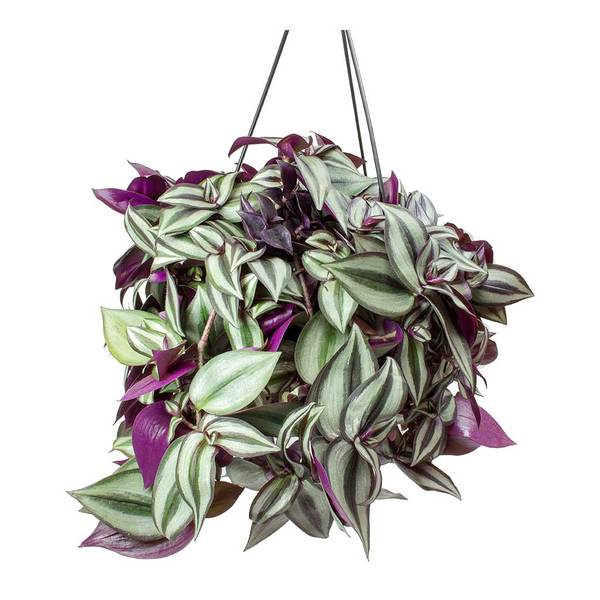 Visit product page →
Visit product page →The common name of Wandering Jew is derived from the its ability to easily root and thrive in different environments
The plant is very fast growing and will quickly generate new growth.
Water well during the growing season and allow to dry out between watering. If the plant sits in wet soil for long periods it will cause root rot. Reduce the amount of watering in winter.
tolerate slight humidity
-
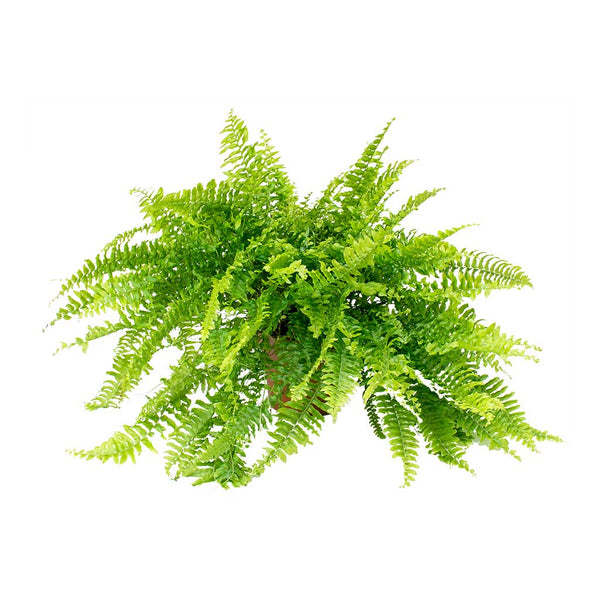
Nephrolepis - Boston Fern
£20.00
Visit product page →The Boston will not only bring an air of calm to your home. It is one of the best known plants for purifying the air and regulating humidity
Pet Safe
Keep the soil moist at all times. Water when the surface becomes slightly dry. Do not over water and use lukewarm, soft water where possible.


